Youtuber Joe Andrews, also known as BluMaan on Youtube has been creating content on haircare and style for over a decade. As his community grew, Joe decided to create hair products based on the feedback that individuals shared with him and launched BluMaan, the company. In this episode of Shopify Masters, we speak with Colin Chik, who’s the current CEO of BluMaan to hear how Joe and the team have launched the company based on community feedback, how manufacturers can be your mentors, and why working with micro-influencers is a great investment.
Show Notes
- Store: BluMaan
- Social Profiles: Facebook, Twitter, Instagram
- Recommendations: No Fraud (Shopify app), Privy (Shopify app), Recharge Recurring (Shopify app)
Shopify Shipping: Did you know that you can buy shipping labels for your orders at home and print them with a regular printer, get shipping insurance within the United States, and receive discounted shipping rates with certain carriers with Shopify Shipping? There are no additional fees, carrier account, or app required– this is included with your Shopify plan. So check out Shopify Shipping today at shopify.com/ship for more information.
Launching products inspired by community feedback
Felix: How is a community involved in the brand and the product?
Colin: Well the brand was actually created by the community. So in 2014, our founder, Joe decided that he really wants to make a hair product. So he posted a video on YouTube asking people what they wanted in a hair product, such as type of hold, the finish, and what the market really lacked. And from there, they started formulating a new product. Our BluMaan Original Meraki. The community really pushed our product a lot. We did testing with the communities. So we sent out samples throughout the whole year, trying to get people's opinion. What made it good, what's bad about it. And even when the company first started, a lot of the community members took volunteer positions, like our customer service, our product development, our marketing team were all built with the community members. So that's what makes us kind of unique compared to a lot of brands because we're built by the community directly.
Felix: How did the community begin?
Colin: So the community was really built on Joe's following. Joe is a YouTuber for those who don't know. When we built the community, he was about 250,000 followers on YouTube. And his vision was that he wants to connect with every one of his followers on YouTube on a more personal level. So he literally responds to every message that gets sent to him on YouTube. And he talks to them a lot. And one day he decided, let's make a community together on Facebook. So he created a group and he really marketed on his channel to push people into this group. And his philosophy was he wants to make a group where people can share hair tips, hairstyles, product reviews, and just bring his fans into more community talking like aspect.
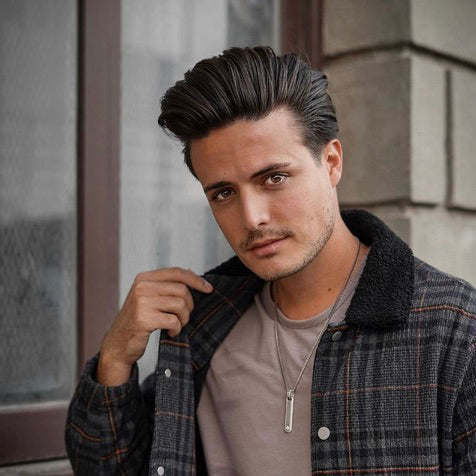
Felix: So you mentioned that this community actually lives on a Facebook group. He drove the new members into the group from his YouTube channel. Can you speak about the ways to engage a community?
Colin: So one of the things that our founders did was, they actually were really into the community. So they talk a lot in the community, post some of the personal stuff that's happening with their life, responded to people's posts, their questions. And ultimately they created another separate group. We call it the VIP is of BluMaan's community. So these are moderators. So we got volunteer moderators that really love the group, and really help push more discussions within the group. Even today we have about 20 moderators that constantly do posts, respond to people, and really become really helpful leaders in that group. And I think that's really important in getting the community started and building that activeness within the community.
Felix: How do they collaborate or congregate?
Colin: It's just a little moderator group. It's just a separate channel to just talk about posts that they don't like or people that are being disrespectful, or they discuss new ideas or new giveaways within the group. So we let those moderators take control. A lot of the things like, what kind of giveaways, what kind of promotions stuff like that within their group. So it's not really run by the company as much.
Felix: What works to continually grow this group, outside of Joe driving this?
Colin: Having really meaningful discussions. Not necessarily just about like men's grooming, but on our group, if you go to our group, if you ever do go to our group, there are people to talks about their daily life, like one of our community members at one point posted pictures of his newborn baby and how much he loves his life, wife. There are more personal or more empathetical discussions are in the group. And that's the stuff I really want to promote a lot. And those attract a lot of new users we feel.
Felix: Are there ways for you to encourage this meaningful discussion?
Colin: That's a really hard question to answer. I think the way that we treat our moderators really helps get them excited about our group. Like we treat them like if there are team members are employees of BluMaan every single day, and we really give them all the special treatments such as like, let them try out our new products and stuff and show them the results of what's happening with our group. Like allowing new people to join, how people left and the happiness level of the group really motivates them in participating.
Felix: Now, when it comes to things like giveaways, how does that work?
Colin: We did do quite often. I think every quarter we do one giveaway and these giveaways are done by the moderator and our marketing team in house. So they communicate with each other and then they basically come up with an idea and we've tried to work with other sponsors, like other brands, so do a collab giveaway or whatnot. And yeah, it's been pretty successful in that area. When we do a collab giveaway, so we work with other brands. They give out our products to their fans as well. So we kind of cross-promote our community with their customers, our community really likes it because they get to experience new brands or new giveaways. The decision for the type of products and everything that is on our giveaway. We've actually given out airplane tickets or a vacation package before, dinner with Joe, we try to make things exciting and different each time, it's never going to be the same, never going to be like just BluMaan products.
Questions to ask your community for product development
Felix: What kind of questions do you ask a community when creating a product?
Colin: First, identify what's missing on the marketplace, and the product that you want to try to introduce. For Joe, he realized there's a very big disconnect in high quality and natural product in the hair space, and especially direct to consumer online. So that's where his approach came from. And from there he just asked, Hey guys what are the products that you guys like? So what are brands or products that they've been using for the last couple of years? And from there, as you asked, what are the advantages of that product? And what do you dislike of each of the competitor’s products? And you take all the good stuff and we move all the bad stuff and basically try to make your ideal product and then find a lab or chemists to make samples to create that product.
Felix: What was the actual specific problem that you guys have recognized before asking them more about the products that they're buying in this space?
Colin: So for this space, a very high hold product that gives a really matte finish, and it's still healthy for the hair. Because one of the biggest things for men is like, we need our hair to be very healthy, to have that beautiful shine or beautiful look. So that was the biggest thing for us was the hold, matte finish, and the natural ingredients in the product.
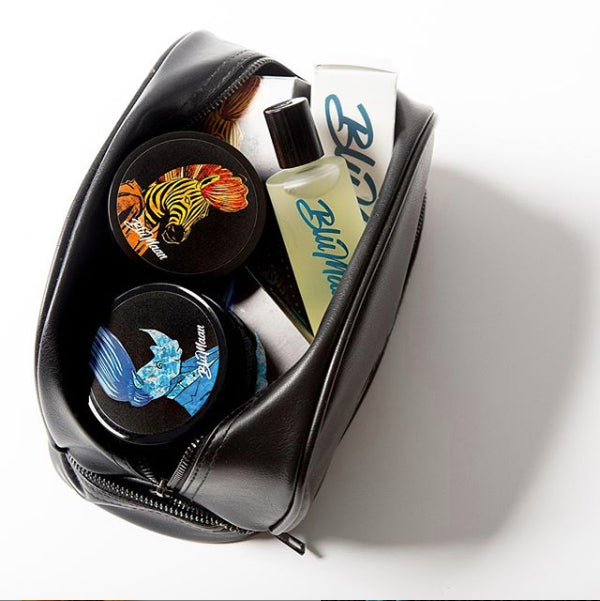
Felix: What are some of the answers went into the creation of your product line?
Colin: So one of the big things that people really didn't like of a hair product was, it was really hard to get on people's hair. When you wash it, shampoo a lot of products were made out of oils, or wax that didn't wash up properly. And it created a lot of tugging. And then when you create a lot of tug on your hair, you kind of lose your hair even faster, especially for men, right? And in men, hair loss has been a big issue. So that being said, people wanted ingredients in the hair product that promoted hair growth to prolong their hair. And the hold is very important. A lot of men noticed that like you put your hair product in the morning by noon, it starts flopping. That's another issue that we noticed. Those are the three main, biggest problems that we notice.
Felix: How do you decide what you should actually add now today in the product you go to market with today?
Colin: For us, I think we do more of a pole. We actually do a lot of surveys and stuff on our community to determine what are the main features that they're looking for. And basically want to look for something that's more like 70 or 80% of the people that did do the survey, that wanted a special feature. And that would be the feature that we try to aim for.
How manufacturers can be great mentors
Felix: What's the next step once you have an idea of the results that you want to achieve with a product?
Colin: So one of the things that most people don't realize is Google is full of resources. You can literally Google anything. So when we first started, we literally Googled a manufacturer that we want to work with. And Google came off a lot of good results and you basically have to email every manufacturer, talk to them, see how much it costs to do your R&D for your prototype, and just work with your manufacturers, tell them exactly your situation. Don't lie about how big your company is. Just be very honest. It gives you a lot of perks with these manufacturers because a lot of manufacturers really love working with small companies or startups.
Felix: What are they looking for in a startup that makes a startup attractive to a manufacturer?
Colin: Because the thing with a startup is they can become a really big company really fast and there'll be more dedicated using that manufacturer over a long period of time. And a lot of CEO's from these manufacturers love helping young entrepreneurs. It's just a thing that they really love helping these people succeed. And some of these CEOs, from our manufacturers, are kind of mentors and it tells us like really insider stuff about our industry that we would not have been able to Google.
Felix: What other things have you discovered that the manufacturer has been helpful for your business, that you think other entrepreneurs might be underutilizing?
Colin: Okay. So if you've built a really good relationship with a manufacturer, they will sometimes tell you about like trade secrets, like what are the upcoming products that other people are manufacturing or the trends that they see. For example, they'll tell us ingredients that are becoming more popular and new ingredients. How other similar competitors that we're at the space that we're in, how they're doing the marketing, even approximate quantities of orders that they're even doing, and strategies of their supply chain or manufacturing and even their payment terms.
Felix: What are some early mistakes that you guys might've made that you want to warn other entrepreneurs from making when they're working with the manufacturer?
Colin: There's a lot, always prototype and always do a first batch sample, prototype and your first batch might not always match. We had situations where it didn't match and we had to redo the whole first run. So don't just assume everything's going to be exactly like the prototype. Especially for our cosmetic industry. When they do the lab sample or the prototype sample they did in a lab. But when it comes to their full batch manufacturing, these machines are larger, even as a slight change in temperature or a slight change in the percentage of the ingredients may affect the product significantly.
Felix: How many prototypes did you guys go through for the first product?
Colin: The very first one I believe they did about 50 prototypes, 50 iterations, on average at BluMaan we do easily sometimes past the 50 Mark. One of our products took over two years to prototype. It happens all the time. We believe that that product would be a really good add on to our product line. And it's something that we really needed. We are also a lot of demand from our community, demand from our customers, and we just wanted to make it perfect. There's a lot of companies that do make products and they don't really care about the full quality of the product as much, but for us, we wanted to make it perfect every single time before we launched our product. And that's why our product development cycle is significantly longer than the average company.
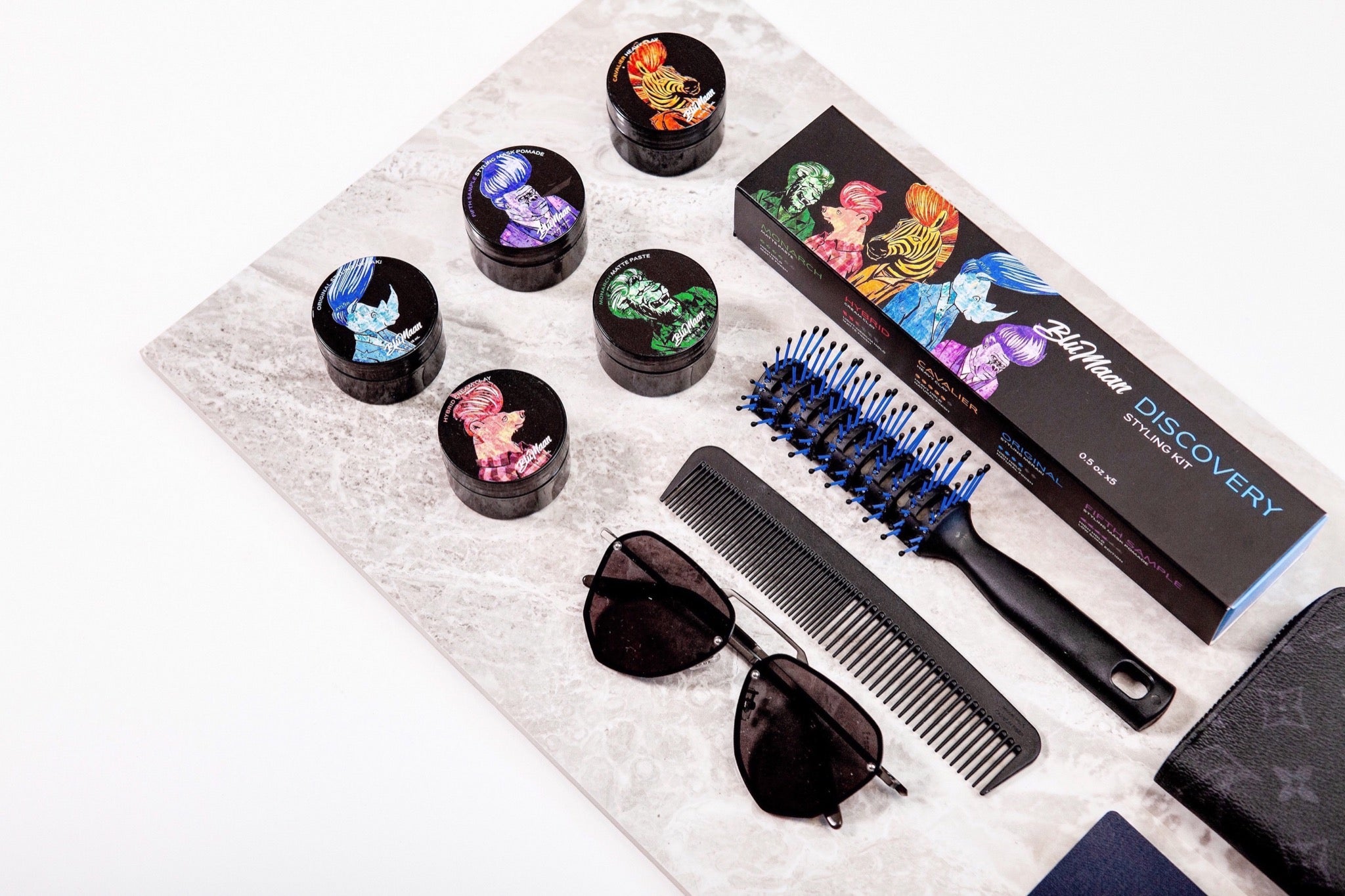
Felix: How do you actually figure out if a product is good enough or if it needs a certain tweak?
Colin: So all this is based on feedback from people. So when we first create a prototype for a new product, we actually give it to our team to try. So we have log guys working in our office and they will try it out, and they'll with Joe and then write down their feedback, the feedback is sent back to our product development team. And that is sent back to the lab exactly what we were missing or whatever you would like to see more. And we constantly do this until our team on a majority basis like the product. And once that is done, we then send it out for mass testing. So we send it out to our community team that tests our products on a regular basis and they come back with feedback. And if it does not good, we go back to the drawing board and we formulated again or tweak it until we get it where the team and the community are happy with it. And then we'd do another test after, in-person test. So we usually host at my small little event at a barbershop or whatnot, and we invite our followers, a couple of more dedicated followers to come in and actually try the new product beforehand and see how they like it. If any part of this testing phase people are not fully satisfied, they would really go back and retweak again. And sometimes, you can't really tweak it all the way to perfection. In which case we will have to totally reformulate it again and start from step one again.
Felix: What are some examples of things that you have discovered that the team thinks is perfect but hen you release into the community, they notice certain things?
Colin: One of the things with hair products is every man has different types of hair, so there's fine hair, there's coarse hair. And people have curly hairs. So different hair requires a different type of product, unfortunately, different requirements mostly on the hold side, for fine hair the hold is very different from our coarse hair basically. And because our office is... we don't have like a broad variety of hair types. So that's why there's going to be a difference between the community and our office team.
Felix: So what's the point of doing in-person trials?
Colin: So it goes back to the type of hair as well. People in the community and people in our office, there's going to be some type of a demographic that's missed, right? So we want to put those people into the in-person from just randomly picking people from the community. And also it gives a little incentive for people in the community that when you're a part of this group, you might be chosen to do an in-person. And it's a huge bonus, you get to meet Joe. You get to try a new product, and you get free products to going there.
Felix: What are some examples of how differently people use your products?
Colin: So not many people realize that there's such thing as a pre-styler and does a post styler. So a pre-styler is when you use a product when your hair is slightly damp and then your blow dryer to activate it, to create that better hold more volume, especially for finer hair. And then there's post styler when you use the product after your pre-styler, so your final product that you use. And those two products may not be the same. You may be using the BluMaan Original for pre-styler and use BluMaan Cavalier Clay as a post styler. So that's one of the different ways of using our products, and these can be mixed around. So some people might not like our Original as a pre-styler, but they're like our Monarch for our pre-styler. And there's always that mix and match. That's one of the things that are very different for different people with different hair types.
Felix: You mentioned first start with a small batch run. How small are we talking about?
Colin: You always should be asking minimum order quantities. However, if you have a really good relationship with that manufacturer, they'll actually do even that smaller batch than that. Small batches might still be at over a thousand units.
Why working with micro-influencers is beneficial
Felix: Once you get back a thousand units, what do you do with those?
Colin: We basically try to send it to influencers. For marketing-wise, we sent to influencers. We would give it out to our community leaders. We'll give it to our office people to try it out. Our product developer would heavily test the product, make sure that's really consistent in all units. We sent it to our founders and just do vigorous testing to make sure that same as the prototype was given to us.
Felix: What's the marketing plan, or how do you guys launch a new product or a new product line to the community?
Colin: So one of the first things that we really wanted to try in our operations side is seeing how many units we going to actually create. And that is like more towards the number side of things. How much money are we willing to invest in? How much can we even afford to invest and still have money for the marketing side, especially for a startup with very limited resources? This is a really crucial part of launching a product we can overproduce and we shouldn't under produce, right? And once the budget is created, we give to a marketing team and a marketing team works with a budget. We also give the product to our sales team, our B2B distribution team, and they determine how much products that they actually need. And we actually... how we allocate the products. So we'll say, okay B2B gets 30% of all our products that new launch, feed direct to consumer gets the remaining. Then from there, we actually have a playbook that we have for launching new products in BluMaan, and they follow the playbook while adding in a new something new to it. Something that they want to test out during launch.
Felix: Can you give us a high level of what that playbook looks like?
Colin: Basically how to create hype for a product, being mysterious kind of create that buzz for the new product, how to get people's attention for the product. And they say which marketing channels we're targeting, how we're going to target it, and most cost-effective way of targeting these channels. In my opinion for new entrepreneurs, you want to look at your competitors, what they're doing. Usually with they're spending a lot of on paid ads, or they spend a lot of money on like influencers. There's a reason why they're doing that. It's usually because the ROI does make sense for them. Usually I would say, just follow what they're doing, but doing a smaller scale. So if they're targeting large influencers, for example, you always target micro-influencers. Because micro-influencers cost less usually doing it for free compared to large influencers. So it's easier to just follow what people in your industry are doing and not make that mistake. And then when you do have that extra money, they can try different channels that your competitors are not trying.
Felix: You mentioned targeting on these channels. What do you mean by that?
Colin: So there are different channels out there right now, even new channels, such as a TikTok for example, that's a really new social media channel. When we say targeted, like find a way that we can fit our product into that channel without being too salesy, be more subtle, and just get our product in front of people. So people know about it rather than to just sell it.
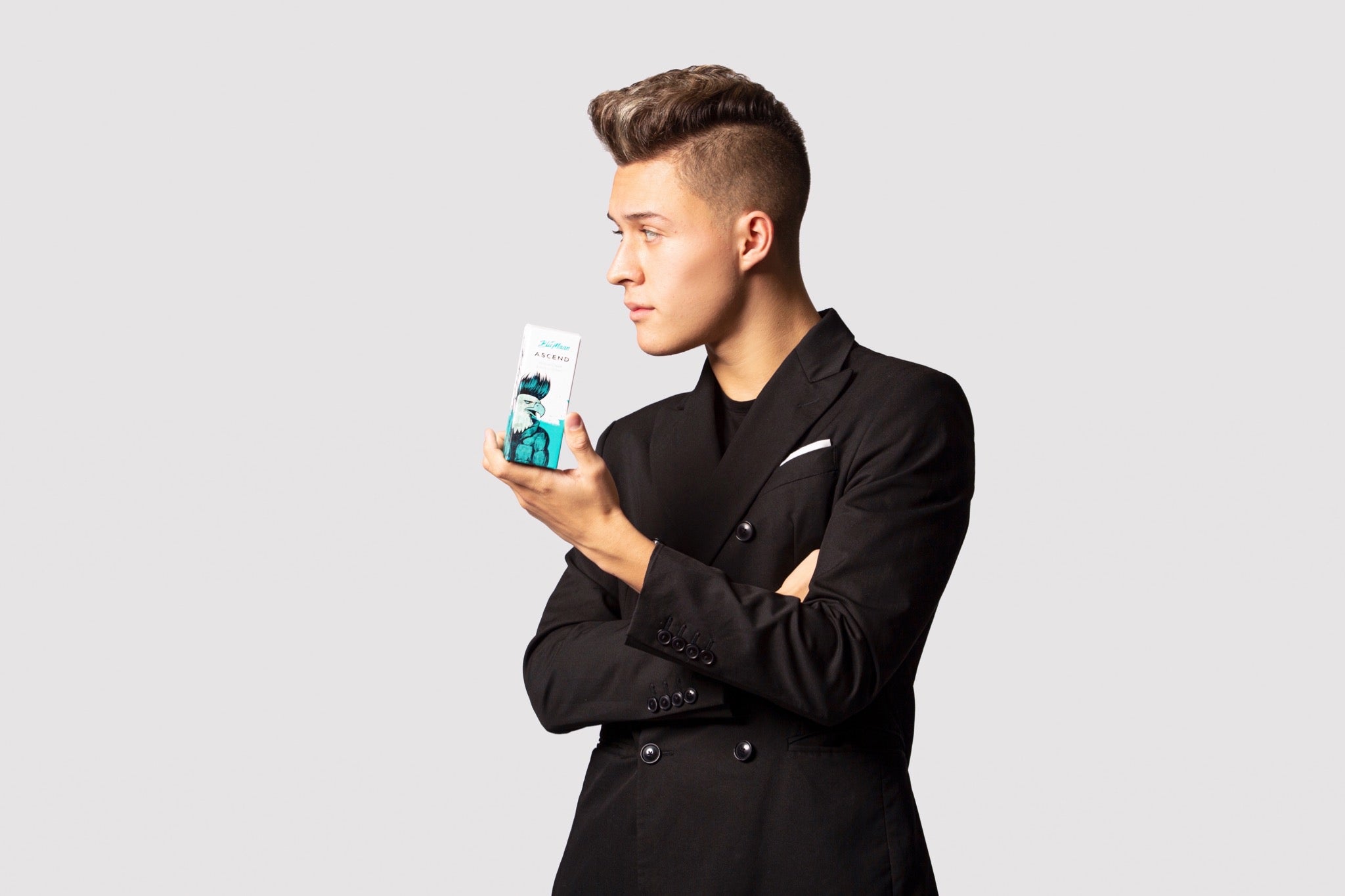
Felix: What's the channel that you guys almost always want to spend Lots of effort and resources on?
Colin: Influencers has always been our biggest market for us. It's actually different types of influencers. So when we first started, we focused more on the men's style and fashion and men’s hair, and we're slowly moving away from that more to lifestyle, like athletics, kids even. So those are different channels within Instagram that you can try to target, or untouched markets basically. One of the thinking behind it was that these type of influencers especially in our market, fashion influencers. They tend to be over-saturated, they market a lot of different products like skincare, multiple different hair products. And it doesn't seem less authentic a lot of times, if you see an influencer marketing three or four different hair products, you really trust in that influencer in their hair product selection, it's kind of hard to do. So, so what we realize is markets that, or channels of types of influencers that don't haven't ever marketed hair products before seem to be a better fit and a better return on investment.
Felix: How do you make sure that an influencer is a good fit for the brand?
Colin: So to find the right influencer, we are too much at brainstorms and look at, these are the influencers that are coming through our door and they determined like, Hey, does this person have good hair, does this person have high engagement? Like, are the followers very dedicated to them? What's the response rate when you do a post, and how saturated they are in their paid ads. Right? So even if they never did a hair product before, if they've done a lot of like promotions, that's also really not the best sign for us. It wants someone who doesn't really do many promotions, maybe just support one or two brands kind of thing. And that's what we look for. Micro-influencers are really good in ROI. In general, they tend to have much higher engagement. They cost a lot less than a major influencer and they really put more effort because they're still small. So they really put that effort in and making their content better.
Felix: Now, when you identify a micro-influencer or influencer at all that you want to work with, how do you get in touch with them? And what's the pitch that seems to work?
Colin: I think one of the biggest things is that do they feel comfortable and that does it really represent them when they represent this brand, right. Does this brand fit their lifestyle or fit them? And I think that's the most important part of getting influencers to take on this brand as an ambassador or to promote it.
Building an online store that’s brand-aligned
Felix: So let's talk a little about the website. So is that all done in house?
Colin: The first iteration of the website on Shopify, we actually didn't do Shopify to be started. We actually did on Google commerce in the beginning and that was done in house. Then we switched to Shopify and it's been amazing. Shopify is amazing. We started with a theme first and then we customized a theme. And later on, we hired a Shopify, a web design firm to help us make the next one. So the credit theme was made by an agency, it was a lot more costly, but it had a really good return.
Felix: What are some things that you guys wanted to fix essentially the new version of the site?
Colin: So one of the things that, has been the problem for us was identifying our brand. So a lot of our marketing materials were too scattered because it was made by, a lot of times we've made by volunteers, right? Because the volunteers did our marketing for us a lot of times, and it was really inconsistent. So our website design didn't really match our branding. So first literation we try to make it closer to our branding and make everything consistent of font and et cetera. And on the last revision, the third revision, we really focus just on the branding. And that really helped with the conversion rate.
Felix: What did you like tactically change on the website to improve the branding?
Colin: So one of the things is making sure that all our photos or our assets on our website match the type of people type of demographic we're targeting, having high-quality images, having those men with a nice hairstyle that could be created with BluMaan products, making all our images consistent as well like each product shot it must be very consistent to the next one. A lot of people don't really do that. Font, the font colors, the color of the website should match the packaging of your product. That's another thing that we didn't do really well in the beginning and the messaging as well, the copywriting must match our actual product, and what the message that we try to communicate to our customers.
Felix: Are there any tools or apps that you guys rely on?
Colin: There's definitely a lot, actually Shopify has a lot of great plugins. One of the first plugins we have to install with us, we call No Fraud. That saved us thousands of dollars a year. We used Privy the popup, product reviews, plugin. Recharge, for recurring bill payments. We have some SEO plugins, and even an inventory planner as well.
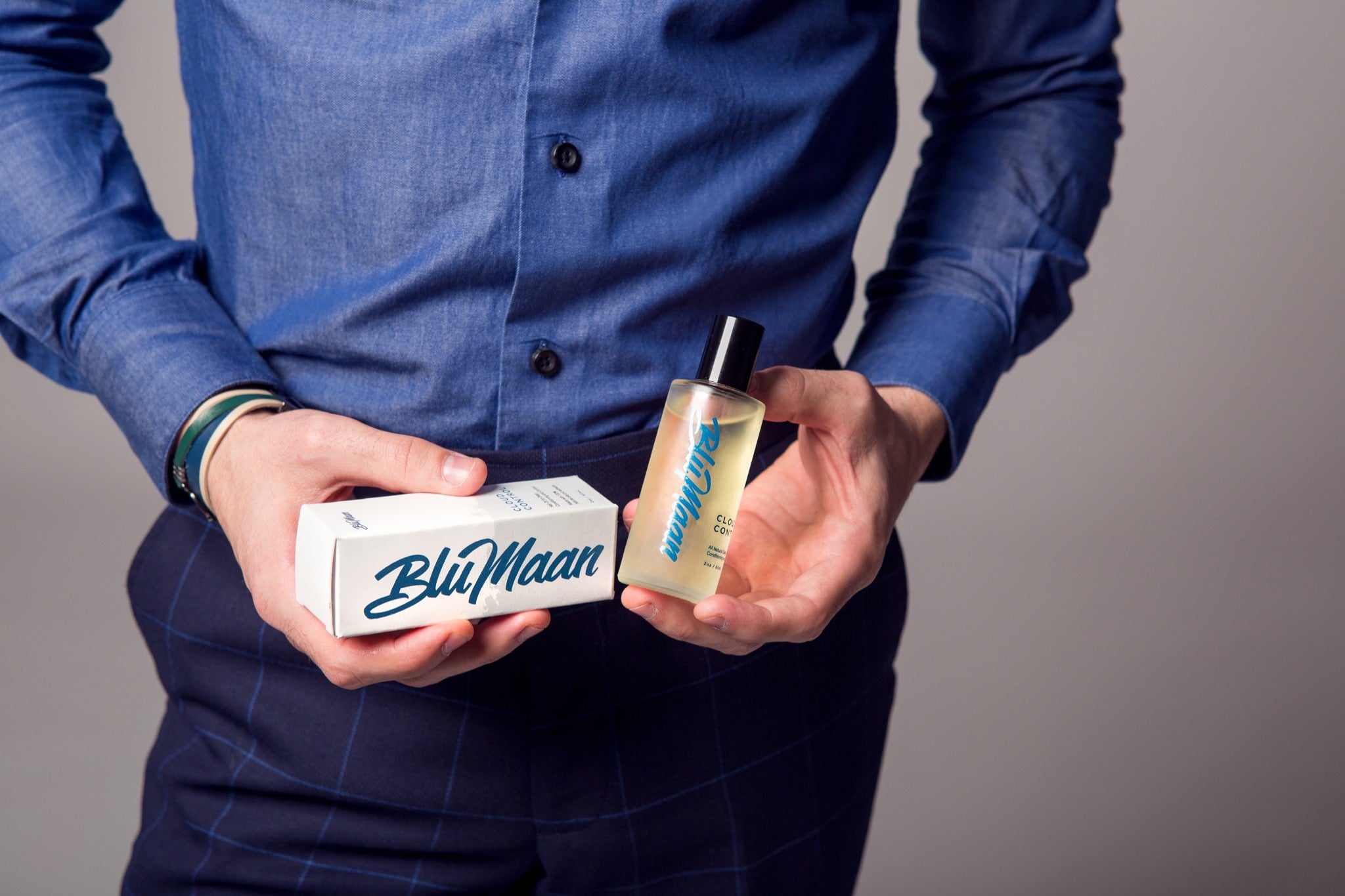
Felix: And we talk about the popup on the site. What is the popup? Is it to collect email addresses? What's the attention of the popup?
Colin: The public intention was to get subscribers to our email list, to give them offers, launches, updates, and really just collect the info as well as giving them like coupons as well.
Felix: What is the incentive, what was worked for you guys to get someone to subscribe to the email list?
Colin: I believe one of the best things was actually understanding our customers in that area. Our popups actually asked like, what type of hair you have, and we try to recommend when they get their first email recommend what type of product that would fit best for the hair. And that's one of the biggest things, what product works for your hair? And even in our customer service, we get that question asked a lot, like what is the best hair product for me and it's not always necessarily going to be a BluMaan product. And we allow our customer service to even promote other products or even competitors’ products, as long as it works for our customers.
Felix: What tool do you use for email what's the software that you guys use to power all of this?
Colin: Email software, we use Retention Science. It’s an AI-powered customer data platform.
Read more
- How To Source Products To Sell Online
- 26 Ecommerce Marketing Tactics: Everything You Need To Know
- The Balancing Act of Being Unique (But Not Too Unique)
- Out of Office- How A Book Apart Was Built by a 100% Remote Team
- The Calculated Risks That Helped Khara Kapas Make $1,500 a Day
- How This Gender-Defying Clothing Company is Tailoring its Operations
- Live from Shopify Unite- Sales Channels, Buy Buttons and the Future of Commerce
- Starting Smaller- Why This Shoe Brand Only Sold Socks For 3 Years
- Catch-Up with 3 Previous Guests- Growing Through COVID-19
- From DIY to a Million Dollars- How Alien Outfitters Scaled By Curating Products





